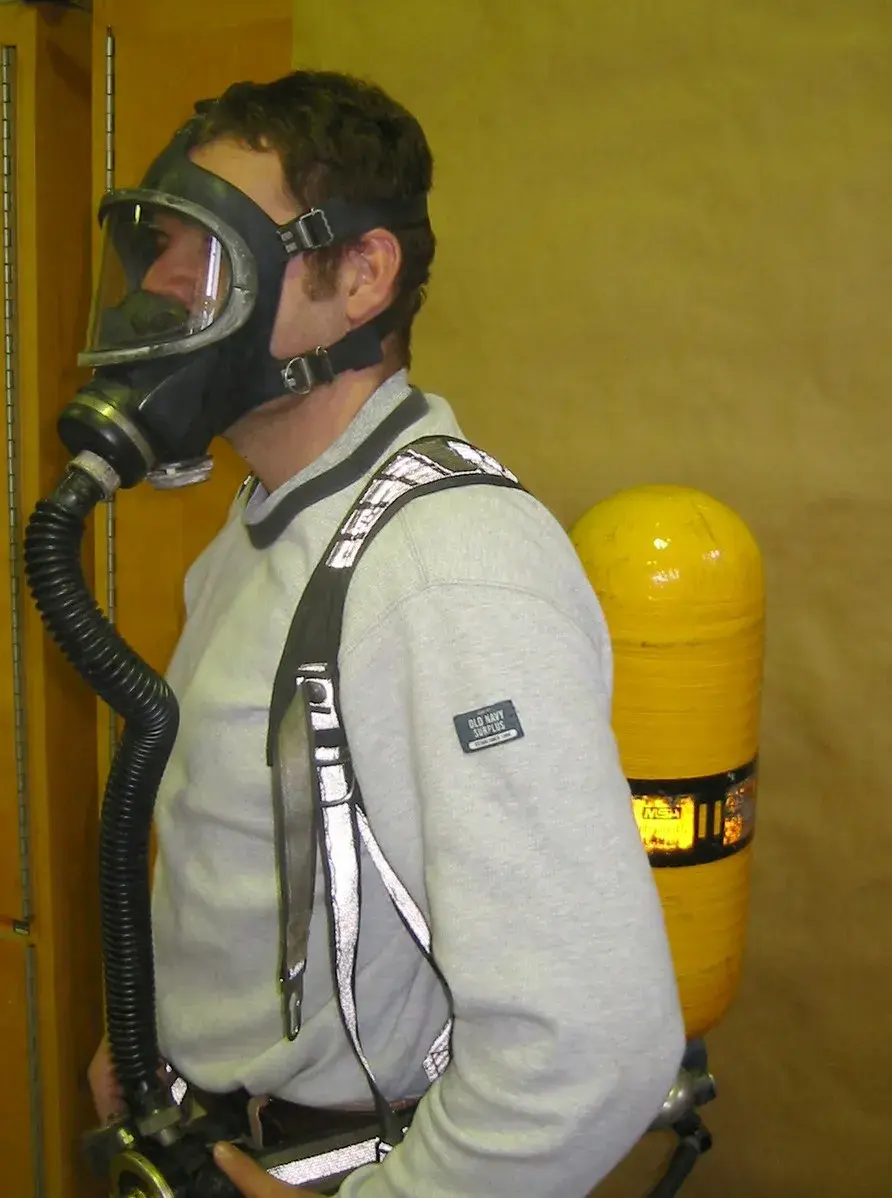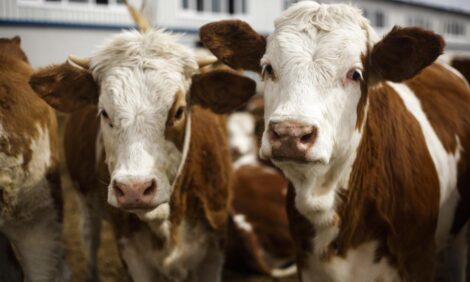



The hidden danger of silo gases
Learn how to stay safe around silos and silo gasSilo gas is formed by the natural fermentation of chopped silage shortly after it is placed in the silo.
Silo gas is formed through the natural fermentation process of chopped forages shortly after it is placed in the silo. As long as silage remains a common livestock feed, the risk of an injury or fatality from silo gases is present. Every farm worker must understand the dangers associated with silo gases and how to deal with them.
Silo gas formation
Though a variety of gases are released during this process, the type of silo in which the forage is stored is important in determining which gas will be predominant. For instance, in sealed, oxygen limiting, silos both nitrogen and carbon dioxide gases are created, but carbon dioxide is produced in far greater amounts. This is desirable because high carbon dioxide levels help to maintain high quality silage. However, this odorless and colorless gas is very dangerous because the gas displaces the silo's oxygen, and in high concentrations, gives a person little warning that they are about to be overcome. Because of this hazard, sealed silos are designed in such a way that entering them is unnecessary.
A variety of gases can be formed in conventional silos but generally, nitrogen dioxide is the most prevalent type of gas. This highly toxic gas is characterized by a strong bleach-like odor and under certain conditions can be visible as a fog from a distance (sometimes mistaken for smoke). If the gas is highly concentrated, this fog will appear to be yellow to reddish brown in color and the silage surface, silo wall, base of the chute and other structures of the silo may be stained (yellow, orange, reddish) from the gas.
Unlike carbon dioxide, nitrogen dioxide levels reach a peak about three days after harvesting and rapidly begin to decrease thereafter, particularly if the silo is ventilated. After three weeks it is unlikely that more gas will be produced, although some hazard remains if the gas has not been able to escape the silo.
Dangers of silo gases
Nitrogen dioxide is harmful because it causes severe irritation to the nose and throat and may lead to inflammation of the lungs. Individual reactions to silo gas depend on the concentration of the inhaled gas and length of exposure. Very high concentrations of gas will cause immediate distress resulting in a person collapsing and dying within minutes. However, what makes this gas especially dangerous is that a low-level exposure is accompanied by only a little immediate pain or discomfort. Milder concentrations could cause upper respiratory congestion, watery eyes, cough, difficulty breathing, fatigue, nausea, etc. If symptoms are mild, an individual may stay in the area to finish the job making the effects of silo gas worse. Effects can last for several hours in the body, causing symptoms to become progressively worse over the course of a day or two.
If a person experiences any of these symptoms when inside or near a freshly filled silo, they should immediately exit to fresh air and discontinue the task. They should immediately go to their doctor or hospital emergency room and report that they have been exposed to "silo gas poisoning". One after-effect of silo gas poisoning is fluid in the lungs leading to chemical pneumonia and possibly death if not treated promptly. The effects of fluid filling the lungs may not present itself until several hours after the exposure--which may be too late.
Safety practices
Like carbon dioxide, nitrogen dioxide is heavier than air so the highest concentration of gas is typically located at the silage surface, which is the area where a person will be going if they need to enter the silo for any reason. If a silo door is open near the surface of the silage, the high concentration of gas (heavier than air) could exit the silo through this door, and flow down the chute causing it to settle at the base of the silo, in the feed room, or flow into the barn area. This dangerous buildup of silo gas can occur if there is little ventilation in the barn area. Gas may even flow into the barn itself and become trapped in corners, under feed bunks, or lie low against the floor.
The flow of silo gas into barn areas poses a threat to livestock. To prevent silo gases from poisoning your livestock, provide good ventilation wherever possible in and around the silo when silage is fermenting and close the door between the feed room and the barn.
Safety of your family is more important than that of the livestock. Children should be of special concern, because the silage operation is often an intriguing event for them. It may be difficult to keep them away from the silo during its filling or for the three weeks when dangerous gases are present. Therefore, it is essential that the seriousness of this hazard be clearly communicated to each family member, but do not rely on this warning alone. Keep your children away from dangerous areas (e.g., padlocking doors, fencing, barricades, etc.) where they could be exposed to silo gas.

Ideally, every farmer should also avoid the silo during the critical period when gases are forming. With the sealed silo this is easily done. Unfortunately it is not always so easy to keep away from a conventional silo because unloaders breakdown, chute covers must be put on, silage must be leveled and filling the silo is usually not accomplished in one cutting. Because entry into these silos sometimes becomes necessary while nitrogen dioxide might be present, the recommended entry method is to use a self-contained breathing apparatus (SCBA) which is the only breathing device that can protect you from the varying types of silo gases.
Dust masks or chemical cartridge respirators will not provide protection because they are not intended for use where gases are extremely toxic or where the air has been replaced by gases such as carbon dioxide. Unfortunately, the intricate components of the SCBA which make the breathing apparatus effective against silo gases also makes it expensive to buy, difficult to fit, and will require proper training in its use.
Entering a conventional silo
Stay out of the silo during the first 3 days after filling. If you must enter the silo after the first few days, follow these recommendations to reduce your risk of silo gas exposure:
- Ventilation - First, ventilate the silo and all adjacent areas thoroughly before entering by running the silo blower for 30 to 45 minutes before going into the silo, by opening all upper chute doors down to the level of the settled silage and opening the windows in the feed rooms. The blower should remain in operation for the entire time you are inside the silo. Remember that the less silage in the silo the greater the risk that the ventilation from the silo blower will be insufficient to adequately dilute the silo gas. In other words, there is no guarantee that silo blower ventilation will make it safe for you to enter the silo without a self-contained breathing apparatus. A calibrated multi-gas meter used to test for gases outside the silo can alert you to whether gases are present.
- Personnel - Never enter a silo unless another person is present and could go for help should you need assistance. This person should maintain visual contact with you at all times because if gases are present, you may not be able to call out to them before becoming unconscious or other sources of noise may drown out your attempts to gain their attention.
- Personal Protective Equipment (PPE) - If, in an emergency, it is necessary to enter a silo containing silage, the individual entering the silo should wear an SCBA. In addition to the SCBA, always wear a harness attached to a lifeline and secure anchor point. Note: One person may not be able to pull a full-size person from danger.
- Signage - Post appropriate signage warning people of the potential for silo gases. By posting "Danger--Deadly Silo Gas" signs around the base of the silo, you are warning visitors, family members, and workers to stay away from the area.
- Power Supply - Prior to entering any silo at any time, use lockout tagout procedures to secure the power supply for all unloading mechanisms.
Silo
Occasionally, gas production becomes so great that it is mistaken for a silo fire. People may see "smoke" coming from the silo chute and assume that the silo is on fire and contact the fire department. Upon arrival, the first responders realize that the silo is just 'gassing'. Remember it is rare for a silo to begin burning in the first week of filling and if a cloud is seen escaping the silo, it is most likely due to silo gas. If the fire company is called, make sure the first responders use a thermal-imaging camera to identify any excessive heating of the silo. A burning silo will give off temperatures of more than 190 degrees at the general location of the fire as viewed with a thermal-imaging camera.


